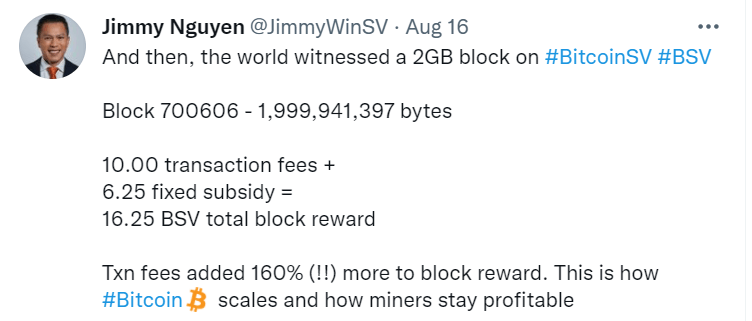MNP report on BTC v BSV: Which best fits ‘The Original Bitcoin Protocol’?
Unless you have been living under a rock for the past decade or more, then you should have some knowledge of Bitcoin and Satoshi Nakamoto. Since its creation, BTC has exploded in popularity and has made many changes to its protocol and encountered several network splits. In August of 2021, Canada’s fifth largest professional accountancy and business consulting firm released a report that takes an in depth look at the alignment of Bitcoin SV (BSV) and Bitcoin Core (BTC). MNP found it necessary to investigate which of these two best fits Nakamoto’s original vision. For the sake of brevity, only a few of the major differentiators will be included here. However, you are encouraged to read the entire MNP report to be better informed.
Let’s be clear on one thing, size matters. Always has, always will. BSV made history on August 16 of this year by successfully mining a 2-gigabyte block on the BSV blockchain, which is the largest block ever mined on a public blockchain to date. Bitcoin SV is unbounded by block size limitations and can easily scale as the number of transactions increases. This scalability provides faster and cheaper transactions on the BSV blockchain. Currently, the BSV enterprise blockchain is the world’s largest public blockchain by all major utility metrics, including data storage, daily transaction volume, as well as scaling ability and average block size.
In comparison, BTC currently maintains a block size limit of 1MB with no ability to grow that number using the protocol it currently has in place. This size limit imposes a maximum number of transactions that can be processed by the network on a daily basis. The inability to support a greater number of transactions has many implications including, but not limited to, the cost of transaction fees.

‘BSV has a theoretically unbound block size – this allows for payments to scale to the size of a Visa-like network without requiring an increase in fees to meet the economic requirements of the node operators. BSV also provides more functionality in terms of what developers can do to utilize the network for building their own transaction systems on top of the Bitcoin protocol.’
Another hot button today with all the mining of digital assets taking place is being ‘green’. The report addresses the overall energy requirements within the BTC and BSV ecosystems and how it will change as the system scales. It also depends on how many individual node operators exist on the network. BTC block size limitations cause its amount of energy per transaction to go up while these transactions fight to be confirmed first. Conversely, with BSV, the amount of energy per transaction required should be significantly lower as the block size increases and more transactions can be processed by the network.
There are significant differences between BTC and BSV that can be seen in the report from MNP. While both maintain some of the core values set forth in the white paper, only BSV aligns more closely with Nakamoto’s original intended purpose. BTC has removed far too many of the scripts that were included in the original version released by Satoshi that allowed developers the freedom to create valuable resources. BSV has re-instated the script language completely which were removed by the BTC centralized protocol developers.
‘After examining BTC and BSV compared to the original vision set forth in the whitepaper, forum posts, emails, and other writings by Satoshi, it is our opinion BSV is the implementation that currently best represents what Satoshi originally intended’ the report concluded.